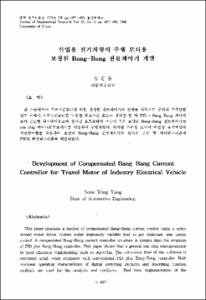C₃H마우스 섬유육종에 있어서 2-Deoxy-D-Glucose가 방사선 효과에 미치는 영향 : ³¹P-자기 공명 분광기와 유세포 분석기를 이용한 연구
- Alternative Title
- Effects of 2-Deoxy-D-Glucose on Radiation Response of Murine Fibrosarcoma : Observations made by In Vivo ³¹P-Nuclear Magnetic Resonance Spectroscopy and Flow Cytometry
- Abstract
- Since 2-Deoxy-D-Glucose(2-DDG) inhibits the glycolysis and malignant tumors have high rates of glycolysis, the potential anticancer effect of 2-DDG has been questioned. In this study, we evaluated the effect of 2-DDG on radiation response in a tumor by the growth delay assay and attempted to characterize the metabolic response and 2-DDG effects on cell cycle and proliferative capacity by means of in vivo ³¹P-MRS and flow cytomety, respectively. 3 dimensions of tumor were measured everyday and volume was calculated from the formula πABC/6. 120 amimals were evenly divided for 12 treatment groups; irradiated with 0Gy, 20Gy, 30Gy, 40Gy, 50Gy, and 60Gy in a single fraction with/without 2-DDG, 1gm/kg which was injected IP 1 day prior to irradiation. ³¹P-MRS were obtained on 4th-12th day after irradiation and averaged peak area of inorganic phosphate(Pi), phosphocreatine(PCr), phosphomonoester(PME) and β-ATP from the tumor of different treatment groups were compared. After 2-DDG injection, growth rate of tumor slowed down. Tumor doubling time between tumor age 5-12 days was 0.84 days with slope 0.828 and tumor doubling time between tumor age 13-28 days was 3.2 days with slope 0.218 in control group. After 2-DDG injection, tumor doubling time was elongated to 5.1 days with slope 0.136. In vivo ³¹P-MRS suggested that the rate of increase in PME and Pi by increasing size of tumor, slowed down after 2-DDG injection. Authors observed in irradiated group that 2-DDG slowed the rates of change in the ratio of Pi/βATP plotted as a function of days after the treatment but 2-DDG did not affect the rates of changes in PCr and PME. Flow cytometry showed significantly increased S-phase and G2 + M phase fraction suggesting increased proliferative capacity of tumor cells in the presence of 2-DDG but authors did not observe any significant change in cell cycle fraction for irradiated group in the presnece of 2-DDG. Growth curves did not show any enhanced growth dealy by the addition of 2-DDG compared with that by radiation alone. Even though authors failed to observe any radiosensitizing effect of 2-DDG in this study, we felt that the findings from ³¹P-MRS were intriguing enough to warrant the further study with higher dose and different schedule of 2-DDG and radiation.
Since 2-Deoxy-D-Glucose(2-DDG) inhibits the glycolysis and malignant tumors have high rates of glycolysis, the potential anticancer effect of 2-DDG has been questioned. In this study, we evaluated the effect of 2-DDG on radiation response in a tumor by the growth delay assay and attempted to characterize the metabolic response and 2-DDG effects on cell cycle and proliferative capacity by means of in vivo ³¹P-MRS and flow cytomety, respectively. 3 dimensions of tumor were measured everyday and volume was calculated from the formula πABC/6. 120 amimals were evenly divided for 12 treatment groups; irradiated with 0Gy, 20Gy, 30Gy, 40Gy, 50Gy, and 60Gy in a single fraction with/without 2-DDG, 1gm/kg which was injected IP 1 day prior to irradiation. ³¹P-MRS were obtained on 4th-12th day after irradiation and averaged peak area of inorganic phosphate(Pi), phosphocreatine(PCr), phosphomonoester(PME) and β-ATP from the tumor of different treatment groups were compared. After 2-DDG injection, growth rate of tumor slowed down. Tumor doubling time between tumor age 5-12 days was 0.84 days with slope 0.828 and tumor doubling time between tumor age 13-28 days was 3.2 days with slope 0.218 in control group. After 2-DDG injection, tumor doubling time was elongated to 5.1 days with slope 0.136. In vivo ³¹P-MRS suggested that the rate of increase in PME and Pi by increasing size of tumor, slowed down after 2-DDG injection. Authors observed in irradiated group that 2-DDG slowed the rates of change in the ratio of Pi/βATP plotted as a function of days after the treatment but 2-DDG did not affect the rates of changes in PCr and PME. Flow cytometry showed significantly increased S-phase and G2 + M phase fraction suggesting increased proliferative capacity of tumor cells in the presence of 2-DDG but authors did not observe any significant change in cell cycle fraction for irradiated group in the presnece of 2-DDG. Growth curves did not show any enhanced growth dealy by the addition of 2-DDG compared with that by radiation alone. Even though authors failed to observe any radiosensitizing effect of 2-DDG in this study, we felt that the findings from ³¹P-MRS were intriguing enough to warrant the further study with higher dose and different schedule of 2-DDG and radiation.
- Issued Date
- 1992
- Type
- Research Laboratory
- Alternative Author(s)
- Chang, Hyesook; Choi, Eun Kyung; Cho, Jeong Gill
- Publisher
- 울산의대학술지
- Language
- kor
- Rights
- 울산대학교 저작물은 저작권에 의해 보호받습니다.
- Citation Volume
- 1
- Citation Number
- 1
- Citation Start Page
- 38
- Citation End Page
- 42
- Appears in Collections:
- Research Laboratory > The ULSAN university medical journal
- 파일 목록
-
-
Download
 000002024267.pdf
기타 데이터 / 411.23 kB / Adobe PDF
000002024267.pdf
기타 데이터 / 411.23 kB / Adobe PDF
-
Items in Repository are protected by copyright, with all rights reserved, unless otherwise indicated.